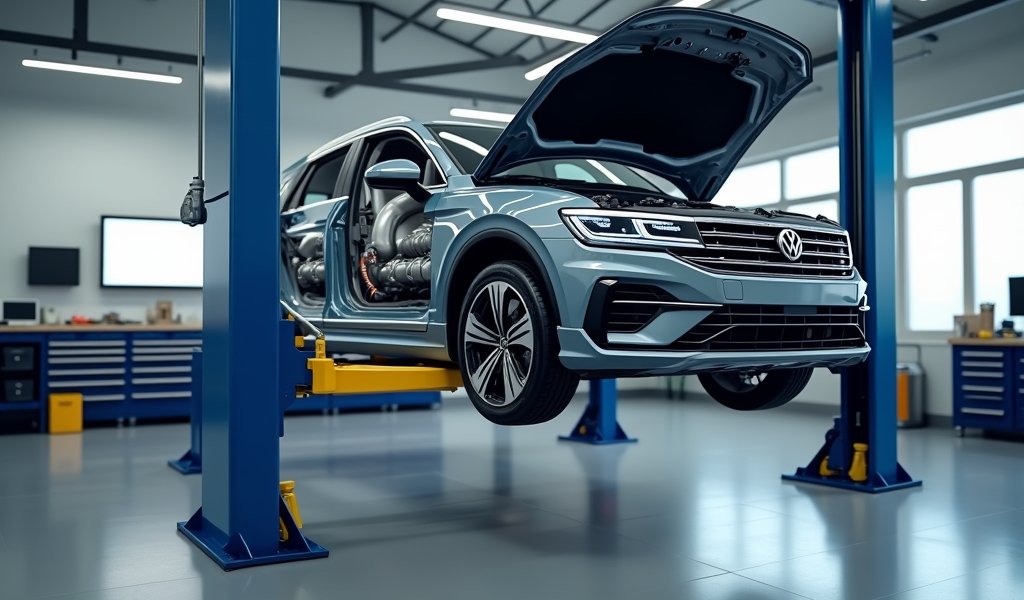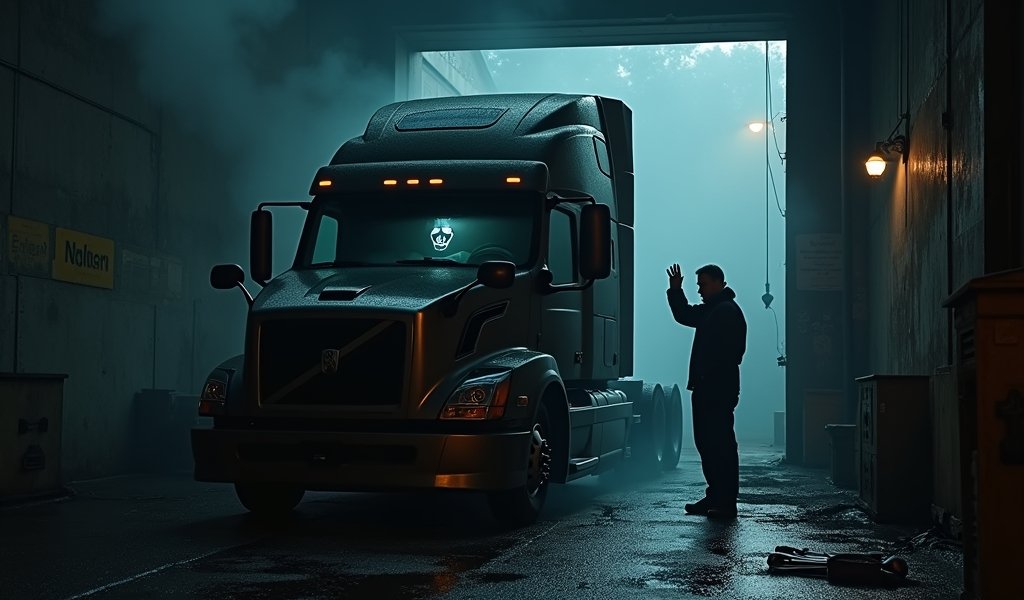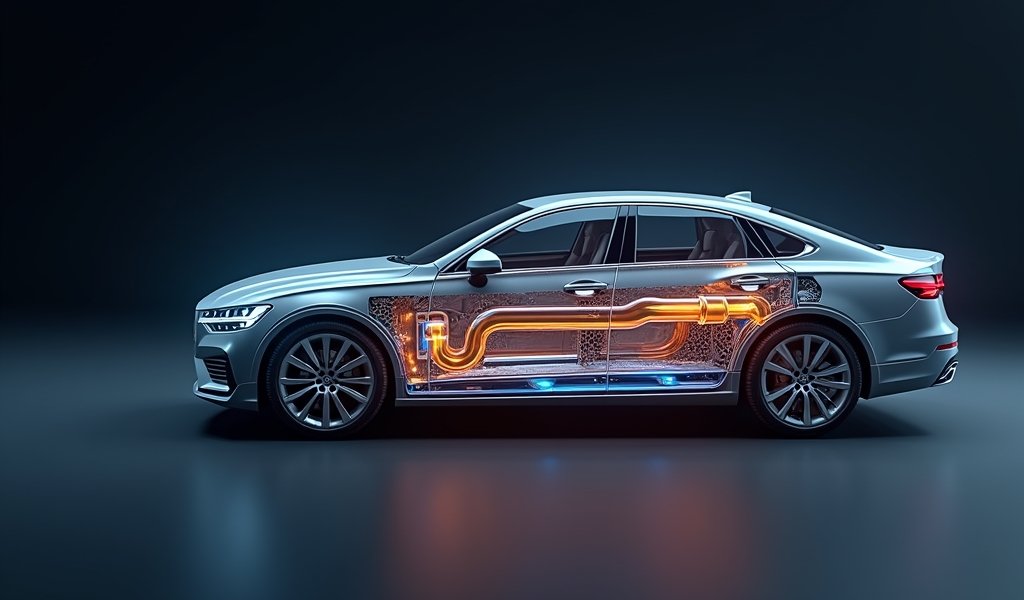Overview
Selective Catalytic Reduction (SCR) systems are advanced emissions control technology that converts harmful nitrogen oxides in diesel exhaust into harmless nitrogen and water vapor by using Diesel Exhaust Fluid (DEF) and a catalyst chamber. The technology improves fuel economy and engine performance while reducing emissions by up to 90%, requiring regular maintenance of components like the DEF tank, injector, catalyst, and sensors to prevent common issues such as contamination, freezing, and sensor failures.
Table of Contents
- Understanding Selective Catalytic Reduction Systems
- How SCR Systems Work: A Mechanic’s Explanation
- Key Components of an SCR System
- Benefits of SCR Technology
- Maintaining Your SCR System
- Common SCR System Problems and Solutions
- Future Developments in SCR Technology
- Conclusion
- Frequently Asked Questions
Understanding Selective Catalytic Reduction Systems
If you’ve driven a modern diesel vehicle manufactured after 2010, you’re already benefiting from Selective Catalytic Reduction (SCR) technology, even if you didn’t know it. As a mechanic who’s worked on hundreds of diesel engines, I can tell you that SCR systems represent one of the most significant advancements in emissions control technology we’ve seen in decades.
So what exactly is SCR? In simple terms, it’s an emissions control technology that converts harmful nitrogen oxides (NOx) from diesel exhaust into harmless nitrogen and water vapor. Think of it as a chemical scrubber that cleans up exhaust gases before they exit your tailpipe.
The technology was first developed for industrial applications in the 1970s, but it wasn’t until around 2010 that it became standard equipment in diesel-powered vehicles. This coincided with the implementation of stricter emissions regulations from the EPA and European Union.
What makes SCR special is that unlike other emissions technologies, it actually allows engines to run more efficiently while still reducing pollutants. This means better fuel economy and performance alongside cleaner emissions – truly a win-win solution.
Today, virtually every new diesel vehicle on the road uses some form of SCR technology. From semi-trucks to pickup trucks, from farm equipment to passenger cars, SCR has become an essential component in modern diesel operation.

How SCR Systems Work: A Mechanic’s Explanation
Let me break down how SCR technology works in language that doesn’t require an engineering degree. The process is actually quite elegant once you understand the basics.
When your diesel engine runs, it produces exhaust gases containing nitrogen oxides (NOx), which are harmful pollutants. These gases flow through the exhaust system toward a special catalyst chamber – the heart of the SCR system.
Just before the exhaust reaches this chamber, a fluid called Diesel Exhaust Fluid (DEF) – also known as AdBlue in Europe – is precisely sprayed into the hot exhaust stream. DEF is a mixture of 32.5% urea and 67.5% deionized water.
When DEF hits the hot exhaust gases, it breaks down into ammonia. This ammonia then reacts with the NOx inside the catalyst chamber, which contains special metals that accelerate the chemical reaction. The result? The harmful NOx is converted into harmless nitrogen gas and water vapor.
The entire process happens in milliseconds as exhaust flows through your system. It’s like having a miniature chemistry lab working constantly under your vehicle, neutralizing pollutants before they can reach the atmosphere.
What impresses me most as a mechanic is how this system can reduce NOx emissions by up to 90%. That’s a remarkable achievement considering there’s no significant impact on engine performance – in fact, SCR often improves it!
The process is continuously monitored by sensors that measure NOx levels before and after the catalyst, as well as temperature sensors that ensure conditions are optimal for the chemical reactions to occur. All this data feeds into your vehicle’s engine control module, which makes adjustments as needed to maintain peak efficiency.
Key Components of an SCR System
Understanding the key components of your vehicle’s SCR system helps demystify how it all works together. Let’s take a look at the main parts:
DEF Tank and Supply System
The DEF tank is usually a separate container with its own filler neck, often located near your fuel tank or in the trunk area. Most passenger vehicles have tanks that hold 2-5 gallons of DEF, while commercial trucks might have much larger capacities.
The supply system includes a pump that moves DEF from the tank to the injector, along with heaters to prevent freezing in cold weather (DEF freezes at about 12°F).
DEF Injector
This precision component sprays DEF into the exhaust stream in a fine mist. The injector must withstand extreme temperatures and operate with millisecond timing accuracy. When these injectors fail or clog, it’s usually due to contaminated DEF or crystallized deposits.
SCR Catalyst
The catalyst is where the magic happens. Typically made from materials like vanadium, zeolite, or metals like copper and iron, this component facilitates the chemical reaction that neutralizes NOx. The catalyst’s efficiency is critical to the overall performance of the system.
Sensors
Modern SCR systems employ several types of sensors:
- NOx sensors – Monitor emissions before and after the catalyst
- Temperature sensors – Ensure optimal reaction conditions
- DEF level sensor – Alerts you when fluid is running low
- Oxygen sensors – Help monitor the combustion process
These sensors feed data to the control module, allowing it to make real-time adjustments to DEF injection rates and other parameters.
Control Module
This is the brain of the operation – a specialized computer that manages the entire SCR system. It processes input from various sensors and controls the precise timing and quantity of DEF injection.
The control module also communicates with your vehicle’s main engine control unit to ensure the SCR system is working in harmony with engine operation. When something goes wrong, it’s this module that triggers warning lights on your dashboard.
Benefits of SCR Technology
As someone who’s spent decades working with diesel engines, I’ve seen firsthand how SCR technology benefits both vehicle owners and the environment. Let’s look at the advantages:
Environmental Benefits
The primary purpose of SCR technology is emissions reduction, and it delivers impressive results. A properly functioning SCR system can reduce NOx emissions by 80-90%, making it one of the most effective emissions control technologies available for diesel engines.
According to the Environmental Protection Agency, reducing NOx emissions helps combat smog, acid rain, and respiratory health issues. With millions of diesel vehicles on the road, the cumulative impact of SCR technology on air quality is substantial.
Fuel Economy Improvements
Unlike some emissions control technologies that reduce fuel efficiency, SCR systems actually enable better fuel economy. This happens because engines can be tuned for optimal performance and efficiency rather than for emissions control.
In my experience, vehicles with properly maintained SCR systems typically see 3-5% better fuel economy compared to vehicles using older emissions technologies. For commercial truck operators, this can translate to thousands of dollars saved annually.
Engine Longevity
SCR systems allow engines to run at their optimal temperature and air/fuel ratio, which can extend engine life. By handling emissions after combustion, SCR lets the engine operate in its sweet spot without compromising for emissions concerns.
I’ve observed that engines equipped with SCR systems often show less carbon buildup and wear compared to engines using exclusively in-cylinder emissions control methods like exhaust gas recirculation.
Performance Benefits
Perhaps most appreciably for drivers, vehicles with SCR systems maintain better performance characteristics. Torque and power output remain strong because the engine doesn’t need to be de-rated to meet emissions standards.
This is especially important for applications where performance matters – think towing, hauling, or climbing steep grades. The engine delivers the power you need while the SCR system handles the emissions cleanup separately.
Maintaining Your SCR System
Keeping your SCR system in top condition isn’t complicated, but it does require attention. Here are my top recommendations based on years in the service bay:
DEF Quality and Refilling
Always use high-quality DEF that meets ISO 22241 standards. Poor-quality or contaminated DEF is the number one cause of SCR system problems I see in my shop. Look for DEF with the API certification symbol on the container.
When refilling, be careful to avoid contamination – even a small amount of diesel fuel or other contaminants can damage the system. Use a clean funnel dedicated only to DEF, and never put anything else in the DEF tank.
Most passenger vehicles need DEF refills every 5,000 to 10,000 miles. Commercial trucks may require more frequent top-ups depending on their operation. Don’t ignore low DEF warnings – when the tank runs empty, most vehicles will enter a reduced power mode or may not restart after being turned off.
Regular Inspection
During routine maintenance, have these components checked:
- DEF injector for deposits or clogs
- DEF lines for leaks or damage
- SCR catalyst for physical damage
- NOx sensors for proper operation
- DEF quality (simple test strips are available)
I recommend having the system inspected at every oil change interval. Catching issues early prevents more expensive repairs down the road.
System Cleaning
Over time, DEF can crystallize and form deposits in the injector and lines. Specialized cleaners and procedures are available to restore system function without replacing parts.
If your vehicle shows symptoms of reduced SCR performance (warning lights, reduced fuel economy), a system cleaning might be the solution. This service typically costs much less than component replacement.

Common SCR System Problems and Solutions
After diagnosing hundreds of SCR-related issues, I’ve identified patterns in what typically goes wrong. Here are the most common problems and how to address them:
DEF Quality Issues
Symptoms: Check engine light, SCR system warnings, reduced vehicle performance
Solution: Drain and clean the DEF tank, flush the system, and refill with fresh, high-quality DEF. In severe cases, the injector may need replacement if crystallized deposits have formed.
Sensor Failures
Symptoms: System efficiency warnings, NOx efficiency codes, check engine light
Solution: Diagnostic testing can identify which sensor has failed. NOx sensors commonly fail due to contamination or age, and replacement is usually straightforward. According to DieselNet, NOx sensors typically last 100,000-150,000 miles under normal conditions.
DEF Freezing
Symptoms: System warnings in extremely cold weather, inability to inject DEF
Solution: Most modern vehicles have DEF tank heaters, but they may fail or be insufficient in extreme cold. Parking in a heated garage or using the vehicle regularly can help prevent freezing. If freezing occurs, it usually resolves when the vehicle warms up without permanent damage.
Clogged Injectors
Symptoms: Inefficient SCR operation, increased DEF consumption, warning lights
Solution: Professional cleaning or replacement of the injector. Prevention is key – always use high-quality DEF and maintain the recommended fluid change intervals.
Catalyst Deterioration
Symptoms: Reduced NOx conversion efficiency, emissions test failures
Solution: The catalyst rarely fails without another underlying issue. Diagnosis should identify if contamination, extreme temperatures, or physical damage is the cause. Replacement is expensive but necessary if the catalyst is truly damaged.
Remember, many SCR issues trigger warning lights but don’t immediately disable your vehicle. Instead, most systems enter a “countdown” mode that gives you time to address the problem before implementing performance limitations. Don’t ignore these warnings – addressing them promptly usually means a simpler, less expensive repair.
Future Developments in SCR Technology
As emissions regulations continue to tighten globally, SCR technology is evolving to meet these challenges. Here’s what I’m seeing on the horizon:
More Compact Systems
Engineers are developing smaller, more efficient SCR systems that take up less space under the vehicle. This is particularly important for passenger cars where space is at a premium. New catalyst formulations are allowing for smaller catalyst chambers without sacrificing efficiency.
Improved Cold-Weather Performance
One limitation of current SCR systems is that they require hot exhaust to function effectively. Newer systems are being designed with faster warm-up times and better low-temperature performance, which is crucial for short trips and cold climates.
Some manufacturers are exploring electrically heated catalysts that can reach operating temperature quickly, even when the engine is cold.
Integration with Other Technologies
The future points toward more integrated emissions systems. SCR is increasingly being combined with advanced EGR systems, particulate filters, and even mild hybrid technologies to create comprehensive emissions control packages.
This systems approach allows each technology to operate in its optimal range, maximizing efficiency and durability while minimizing emissions.
Alternative Reductants
While urea-based DEF is currently the standard, research is ongoing into alternative reductants that might offer advantages in terms of storage, handling, or efficiency. Some researchers are exploring solid reductants that could eliminate the need for a separate fluid tank altogether.
As a technician who’s witnessed numerous emissions technology transitions, I believe SCR will remain the dominant NOx control technology for diesel engines for at least the next decade. It offers an excellent balance of effectiveness, cost, and compatibility with existing engine designs.
Conclusion
Selective Catalytic Reduction technology represents one of the most effective solutions we have for making diesel engines both powerful and clean. After working with these systems since their introduction, I’m continually impressed by how they balance performance and environmental responsibility.
For vehicle owners, understanding your SCR system isn’t just about being environmentally conscious—it’s about protecting your investment. A well-maintained SCR system helps ensure your diesel engine delivers the performance, fuel economy, and longevity you expect.
The key takeaways I hope you’ll remember:
- Use only high-quality DEF that meets ISO standards
- Don’t ignore system warnings—they’re designed to protect your vehicle
- Include SCR system checks in your regular maintenance routine
- Address issues promptly before they lead to more expensive repairs
Whether you’re driving a pickup truck, a commercial vehicle, or a diesel passenger car, your SCR system is quietly working to reduce harmful emissions with every mile you drive. With proper care, it will continue to do so throughout the life of your vehicle.
The road to cleaner air is paved with technologies like SCR, and every driver plays a role in making that technology work effectively. Drive clean, drive smart, and remember that good maintenance practices benefit both your wallet and the world around you.
Frequently Asked Questions
What happens if I run out of DEF?
Most vehicles will enter a reduced power mode when DEF is depleted and may eventually prevent the engine from restarting. This is a regulatory requirement to ensure emissions compliance.
Can I make my own DEF?
No, DEF requires precise concentration and purity that can’t be achieved at home. Using homemade solutions will damage your SCR system.
How often does DEF need to be replaced?
Most passenger vehicles need DEF refills every 5,000-10,000 miles. Commercial vehicles may require more frequent refills depending on usage.
Does DEF expire?
Yes, DEF typically has a shelf life of 1-2 years when stored properly. Always check the expiration date before purchasing.
Will cold weather damage my SCR system?
Modern SCR systems include heaters to prevent damage from freezing. However, extreme cold may temporarily reduce system efficiency until normal operating temperature is reached.


Pingback: AdBlue system freeze protection: 7 Tips - knowsyourcar.com